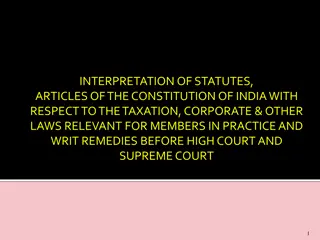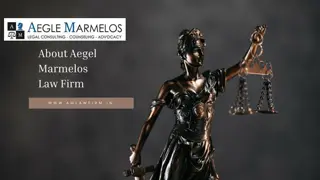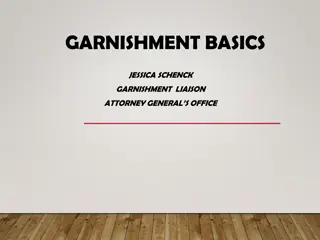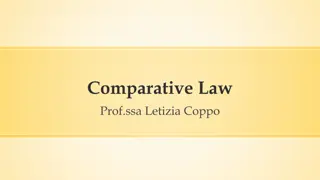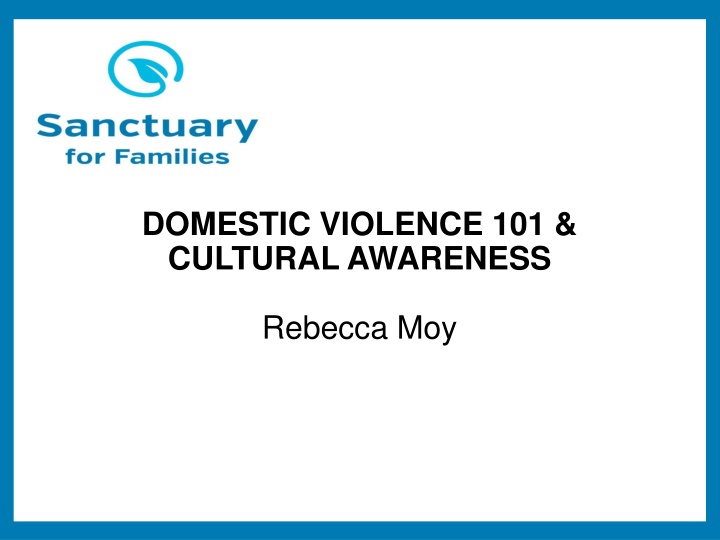
Domestic Violence and Cultural Awareness
Explore the complexities of domestic violence, its impact on different groups, and the importance of cultural awareness in supporting survivors. Learn about common assumptions to avoid and the co-occurrence of intimate partner violence and sexual violence.
Download Presentation

Please find below an Image/Link to download the presentation.
The content on the website is provided AS IS for your information and personal use only. It may not be sold, licensed, or shared on other websites without obtaining consent from the author. If you encounter any issues during the download, it is possible that the publisher has removed the file from their server.
You are allowed to download the files provided on this website for personal or commercial use, subject to the condition that they are used lawfully. All files are the property of their respective owners.
The content on the website is provided AS IS for your information and personal use only. It may not be sold, licensed, or shared on other websites without obtaining consent from the author.
E N D
Presentation Transcript
DOMESTIC VIOLENCE 101 & CULTURAL AWARENESS Rebecca Moy
What is Domestic Violence? Domestic violence is a form of gender-based violence that includes, a pattern of intentionally violent or controlling behavior used by a person against a family member or intimate partner to gain and maintain power and control over that person, during and/or after the relationship. Compass Center for Women and Families
Psychological/ Emotional Religious Physical Sexual What Does Domestic Violence Look Like ? Immigration- Based Technology- Based Economic Litigation
What Do Domestic Violence Survivors Look Like? Ethnicity Socioeconomic status African-American women have a 35% higher rate of IPV than white women, and 2.5x that of women of other races. Anyonecan be a survivor of domestic violence. Gender 1 in 4 women and 1 in 9 men experience severe intimate partner physical violence, sexual violence, and/or stalking. Women in the lowest income households have 7x the rate of abuse of women in the highest income households. Age Ability Sexual Orientation Women with disabilities are 12.1% more likely to have experienced intimate partner violence as compared with those without disabilities. Women ages 16-24 are most at-risk for experiencing sexual assault and those 20-24 years of age are at the greatest risk of nonfatal intimate partner violence. Domestic violence occurs in LGBTQ relationships at similar or higher rates than in heterosexual ones.
Co-Occurrence of Intimate Partner Violence and Sexual Violence Sexual assault or forced sex occurs in approximately 40-45% of battering relationships. People who identify with the LGBTQ+ community experience sexual violence at a higher rate than those who do not.
Addressing Common Assumptions through Cultural Awareness Cultural competence includes four elements: 1) Awareness of one's own cultural worldview, 2) Attitude towards cultural differences, 3) Knowledge of different cultural practices and worldviews, and 4) Cross-Cultural Skills, which involves developing an ability to understand, communicate with, and interact effectively with people across cultures. Check any assumptions you may make about a Petitioner s appearance, background, demeanor, or presentation. Do not assume that you can identify a victim s sexual orientation or gender identity.
Identifying Misconceptions Misconception:If you are really scared about your safety, you call the police. Misconception: If you are abused by an intimate partner, you leave the relationship. Misconception: A victim finds and gets social services for abuse. Misconception: If a victim were really hurt, they would show it (by their demeanor and body language). Misconception:A good person has family and community support.
Advocacy Tips Be mindful of your status as a lawyer and how you may be perceived by Petitioner. Be conscious of your use of legal terms and when possible, use plain language. Remember that some immigrant Petitioners may be translating your words from another language. Show support. You may be the first person to whom the Petitioner is recounting their story. Incorporate safety planning into your discussion. Talk to them about sources of support and how they have stayed safe thus far. Assist in formulating next steps.
CUSTODY TRAINING: AN OVERVIEW LEGAL SECTION Rebecca Moy
Custody Cases Colloquial term custody cases includes: Petitions for Custody and Petitions for Visitation Custody Petitions ask the court to grant decision-making rights, while Visitation Petitions ask the court to order a visitation schedule Applicable Law: Family Court Act (FCA), Article 6. Domestic Relations Law (DRL), 240
Statutory Law FCA 651 jurisdiction DRL 240 factors relevant to a custody determination Domestic violence Child abuse Such other facts and circumstances as the court deems relevant in determining the BEST INTEREST OF THE CHILD
Who Can File a Custody Petition? In general, only a child s parents can file Petitions for Custody or Visitation. It is necessary to show that the Respondent is also the child s parent Acknowledgment of Paternity Father s name is on the child s Birth Certificate Parties were married at the time the child was born In some cases, grandparents or other guardians can also file for custody.
Where Can You File for Custody? (in which Family Court) VENUE Where the child lives. The last county where the child lived for 6 consecutive months or, if the child is less than 6 months old, where the child has primarily lived. If there is already a custody order in place, a Petition must be filed in that county. If there is already a Family Offense Petition pending, a Petition may be filed in that county.
The Petition: Types of Custody Legal Custody Sole custody means the custodial parent has the legal authority to make all decisions in the child s life - educational, medical, religious, etc. They also have physical custody of the child, subject to the visitation of the other parent. Joint custody means the custodial parent must discuss all major decisions in the child s life with the other parent. Whether the other parent has any final say depends on who has final decision making authority . This type of custody will also include a visitation schedule.
The Petition: Types of Visitation Supervised visitation Sandwich visits Day visits lasting a few hours Overnight visits Several consecutive overnights Where there is a domestic violence history, the court will often begin with supervised visits and expand, as long as the visiting parent doesn t mess up.
The Petition: What to Plead SOLE CUSTODY! Unless the client is extremely insistent, always ask for sole custody in the court papers it never hurts to over- plead in this regard. Joint custody is generally a bad situation for parents who have historically had a relationship defined by bullying, abuse, and a power and control dynamic. Joint decision- making opens the door to continued abuse.
The Petition: Substantiating Paragraph A Petition for Custody or Visitation is mostly facts about the client, the Respondent, or the child. There is one small section in which to include the Petitioner s requests and any background relevant to a judge s determination of best interest of the child. Include: Domestic violence history, or Family Offense Petition, if already filed or drafted Primary caretaker history Drug abuse history Time since Respondent has seen the children, or typical visitation schedule
Important Considerations in Drafting Client safety Address confidentiality Choice of venue Indian Child Welfare Act A statement regarding whether the subject child is a Native American child must always be included in your petition.
Evidence for a Custody Case History of Domestic Violence Medical Records Photographs of Injuries Damaged Property Third-party Witnesses Respondent Admissions Criminal Convictions School attendance records Child s medical history showing client as primary caretaker Testimony of neighbors, family, etc.
Service Must be completed at least 8 days before the court appearance date listed on the Summons. Personal Service on the Respondent 2 Methods of Service Sheriff (recommended) Anyone over the age of 18, not a party Substituted Service ***NOTE: Even with the COVID crisis, personal service is still needed. The Sheriff s offices are still serving Respondents throughout NYC.
Custody during the Pandemic New York State on PAUSE: On March 22, 2020, in response to the COVID-19 pandemic, Governor Andrew Cuomo ordered the State of New York, with particular focus on New York City, to limit in-person interactions, and for residents to stay in their homes as much as possible. Family Court is still technically closed for new custody filings. This has led to a lot of parents engaging in self-help There is an electronic filing system called EDDS where custody petitions can be uploaded, but not technically accepted as filed and no information on when they will be heards.
WRITS TRAINING LEGAL SECTION January 2021
Writ of Habeas Corpus In family law, a Petition for a Writ of Habeas Corpus is a request for a court order requiring someone to present the subject child at court. Frequently used when one parent has wrongly taken off with the child and refuses to allow the other any access. Applicable Law: Family Court Act (FCA), Article 6 Domestic Relations Law (DRL), 70(a)
Statutory Law FCA 651 Confers jurisdiction in Family Court DRL 70(a) Outlines the purpose of a writ with regard to custody of a child. Where a minor child is residing within this state, either parent may apply to the supreme court for a writ of habeas corpus to have such minor child brought before such court; and on the return thereof, the court, on due consideration, may award the natural guardianship, charge and custody of such child to either parent for such time, under such regulations and restrictions, and with such provisions and directions, as the case may require, and may at any time thereafter vacate or modify such order. In all cases there shall be no prima facie right to the custody of the child in either parent, but the court shall determine solely what is for the best interest of the child, and what will best promote its welfare and happiness, and make award accordingly.
Best Interest of the Child DRL 240 Factors relevant to a writ determination are the same as in custody generally: Domestic violence Child abuse Such other facts and circumstances as the court deems relevant in determining the BEST INTEREST OF THE CHILD
Who Can File a Petition for a Writ? Anyone with a right to possession of the child, most often the child s parents. Grandparents or other guardians can also file for a writ, if their status as related to the child is such that withholding the child from the Petitioner is unlawful. It is necessary to outline the Respondent s relationship to the child
Where Can You File for a Writ? (in which Family Court) VENUE The last county where the child lived for 6 consecutive months or, if the child is less than 6 months old, where the child has primarily lived. If there is already a custody order in place, a Petition must be filed in that county. If there is already a Family Offense Petition pending, a Petition may be filed in that county.
How to File a Petition for a Writ Virtual Edition Volunteer interviews Petitioner over the phone Volunteer drafts petition with the Writ Petition Template Supervising Attorney edits and finalizes petition Volunteer or Petitioner e-mails finalized petition to court (see template email) or files online via the Electronic Document Delivery System (EDDS) Petitioner waits to receive Summons from the court, to be served on the Respondent. Petitioner must have service effectuated on the abuser AS SOON AS POSSIBLE before the court date listed on the summons.
After the Writ is Granted Petitioner waits to receive Summons from the court, to be served on the Respondent. Petitioner must have service effectuated on the abuser AS SOON AS POSSIBLE before the court date listed on the summons. You can (and should) help the Petitioner with service. Your Supervising Attorney will have contact information for sheriff s offices throughout the city.
The Petition: Substantiating Paragraph A Petition for a Writ should include facts about the relationships between the client, the Respondent, the child. There is one small section in which to include the Petitioner s requests and any background relevant to a judge s determination of best interest of the child. Include: Domestic violence history, or Family Offense Petition, if already filed or drafted Primary caretaker history Drug abuse history Any existing orders of custody or visitation How long since Petitioner has seen/heard from the child and how this long absence came to be. Petitioner s efforts to make contact with child and Respondent.
Service The client will receive service papers from the court, but you can help them effectuate and check on progress. Must be completed AS SOON AS POSSIBLE, before the court appearance date listed on the Summons. Personal Service on the Respondent 2 Methods of Service Sheriff (recommended) Anyone over the age of 18, not a party Substituted Service ***NOTE: Even with the COVID crisis, personal service is still needed. The Sheriff s offices are still serving Respondents throughout NYC.
Substituted Service If the Petitioner has no idea where the respondent is, you ll want to file a Motion for Substituted Service with Writ. Refer to your supervising attorney Include following information Attempts to serve, or why personal service will not work (we have no idea where he is/works/lives) Method of service likely to give Respondent actual notice Facebook Messenger Whatsapp Email Why we believe that Respondent will definitely receive notice if served this way
Important Considerations in Drafting Client safety Address confidentiality pros and cons Choice of venue Indian Child Welfare Act A statement regarding whether the subject child is a Native American child must always be included in your petition. Unknown/unverified information Upon information and belief



